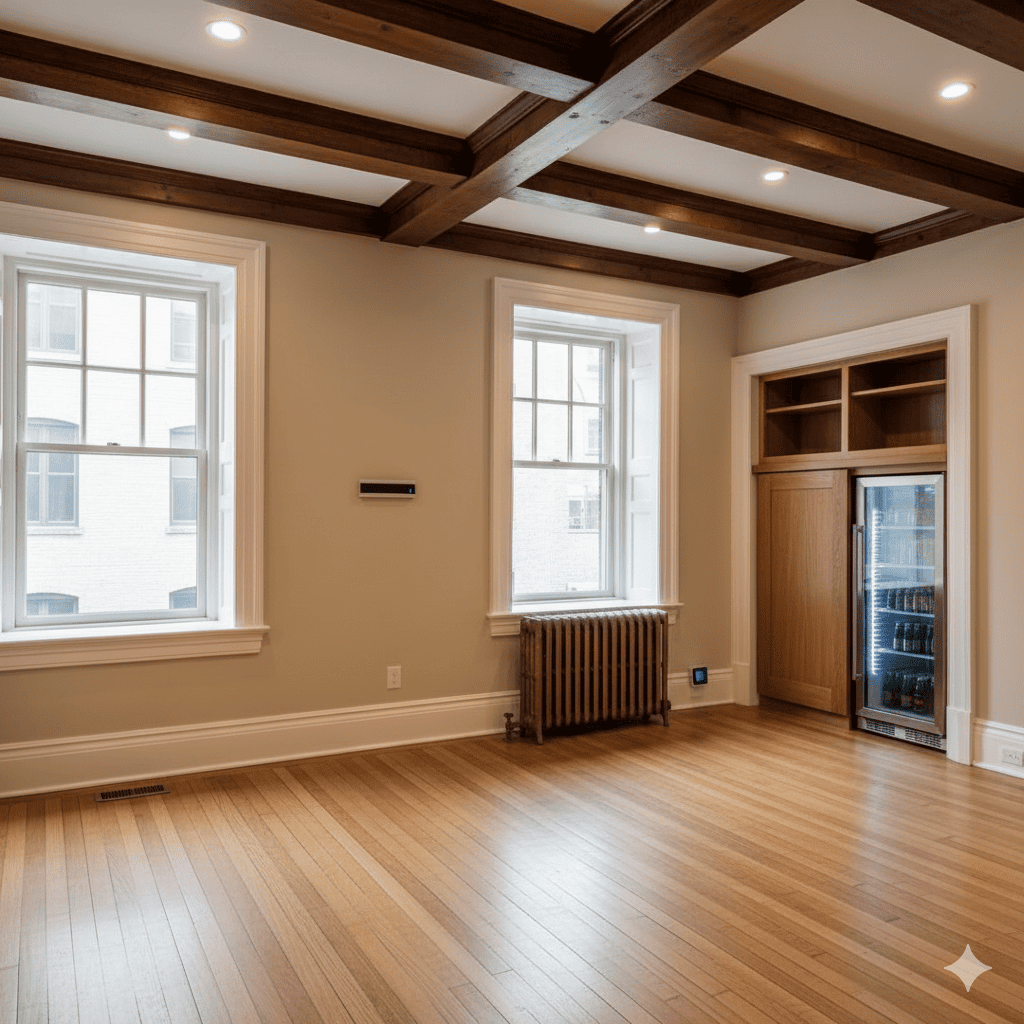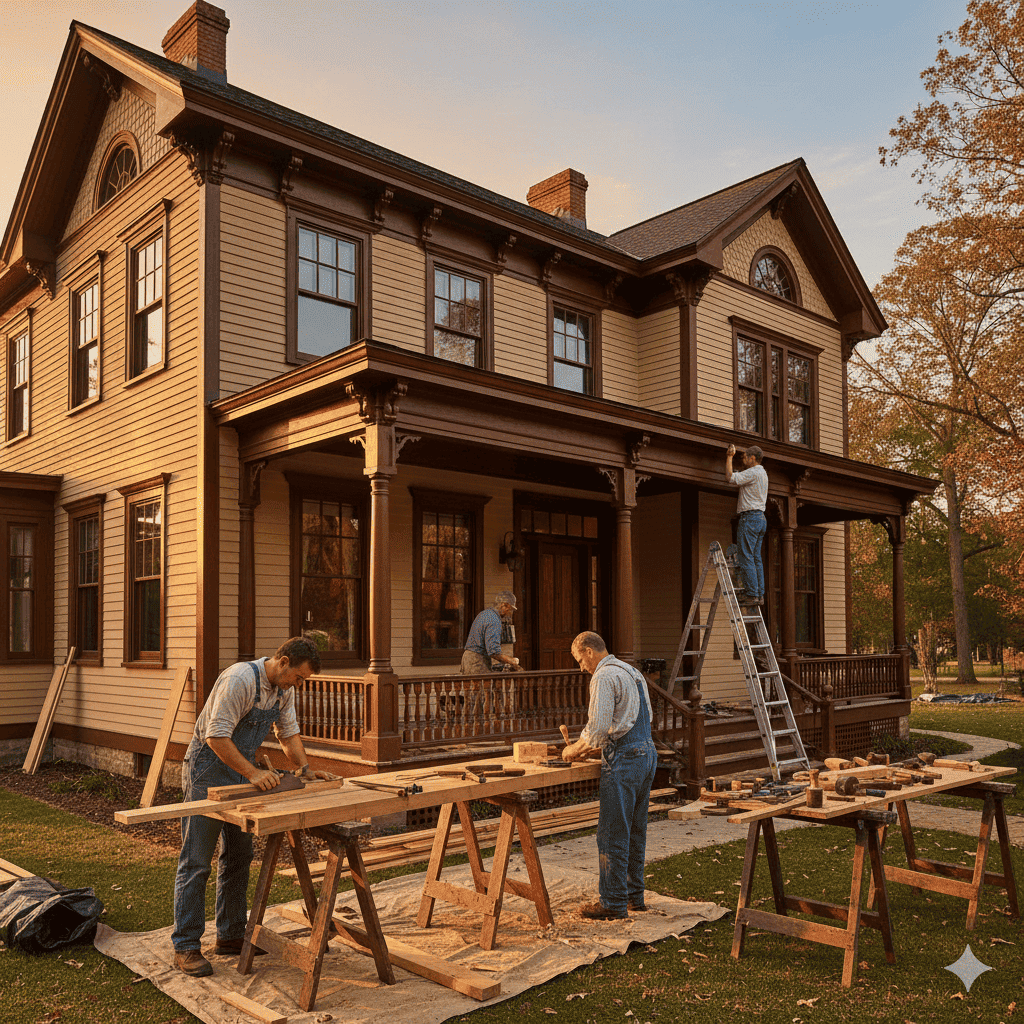Introduction:
Restoring an old home is more than just carpentry, painting or design – it’s a journey into the past. The iconic American TV series This Old House has shown audiences for decades how forgotten or destroyed homes can be revived with care, expertise and respect for heritage. Over the years, the show has become a trusted guide for millions of homeowners, contractors and DIY enthusiasts. However, the real magic is not in the final reveal, but in the careful behind-the-scenes processes that combine modern building science with historic home restoration methods. It takes an in-depth look at how the team approaches each project, the challenges they face and why their commitment to traditional craftsmanship puts them in a class of their own.
1. Understand the soul of an old house
Each episode of This Old House begins long before the cameras roll. The first step is a thorough assessment of the home’s history – when it was built, which architectural style it belongs to, and what changes it has undergone over time. This thorough research helps the team determine the “soul” of the building – its core materials, design intent and functional purpose. Without understanding these elements, no true historical restoration can take place.
The team examines original blueprints, studies old photographs and even consults with local historians to create an accurate restoration plan. This step is important because restoring a historic home isn’t just about fixing structural problems—it’s about preserving history. Knowing the home’s past, the team ensured the end result respected its heritage while meeting modern needs.
2. Structural assessment: Where modern science meets history
Older homes have old foundations, old wiring and hidden structural weaknesses. Before any cosmetic improvements begin, experts perform detailed inspections using the latest equipment – thermal cameras, moisture sensors and advanced scanning equipment. This blend of technology and traditional craftsmanship helps the team discover problems that would otherwise remain unknown.
For example, old beams may appear solid, but may be weakened by internal rot. Pipelines installed decades ago may no longer meet safety standards. Electrical systems designed before modern equipment often require complete overhaul. By combining engineering expertise with historical integrity, This Old House ensures that the structure is safe without erasing the original design elements.
3. Sourcing authentic materials
One of the most challenging aspects of historic home restoration is finding materials that match the original. Whether it’s a unique type of brick, old wood or handmade metal fittings, authenticity is important. The team often collaborates with specialist suppliers who replicate historical material using time-accurate methods.
In many cases, reclaimed material is used – old doors, antique floors, reclaimed beams or old tiles. This practice not only keeps the house historically accurate, but also supports sustainability. Reusing materials reduces waste and maintains a charm that new materials cannot easily recreate. Through this careful purchasing process, This Old House ensures that the restored home feels like a true part of its era.
4. Preservation architectural details
Each historic home has its own unique architectural identity – ornate moldings, spiral staircases, stained glass windows, decorative brickwork and hand-built cabinetry. These details define the character of the home, and preserving them is the main mission of This Old House.
Skilled craftsmen recreate the missing elements using traditional craftsmanship such as hand carving, plaster casting and carpentry techniques. Instead of modern shortcuts, the team relies on techniques that have been passed down for generations. Many visitors are surprised at the amount of time and expertise that goes into restoring just one window or repairing original crown moulding. These painstaking processes are what make the end result so authentic and captivating.
5. Modern updates that respect tradition

Restoring a historic home doesn’t mean resisting modern improvements. Instead, it’s about integrating new systems sensibly so that the character of the home remains intact. This old house excels by hiding modern features like insulation, wiring, smart thermostats and energy-efficient HVAC systems behind walls designed to appear historically accurate.
For eksempel kan teamet installere oppdatert rørleggerarbeid bak tilpassede paneler eller skjule stikkontakter innenfor restaurerte fotlister. Modern kitchen appliances are often built into cabinets styled after the original era. This thoughtful process ensures that homeowners enjoy the comforts of a modern lifestyle without compromising the home’s old-fashioned charm.
6. The art of problem solving
Every historic home presents unexpected challenges – hidden water damage, outdated building codes or previous renovations that were poorly done. These surprises are what make the show so fascinating. Rather than cutting corners, the experts at This Old House approach each problem with patience and creativity.
When they detect structural rot, they carefully remove the damaged parts and replace them with historically compatible materials. When old chimneys bend or tilt, they strengthen them using modern engineering techniques hidden in traditional brickwork. These solutions show the importance of mixing expertise with craftsmanship.
7. Collaboration with skilled craftsmen
Behind the scenes, This Old House brings together some of the industry’s most skilled professionals – carpenters, masons, electricians, plumbers, architects and historians. Each expert contributes to the transformation of a home with a deep understanding of both history and technology.
Many of the artisans featured in the show are experts in traditional craftsmanship, able to recreate centuries-old methods with precision. Their knowledge ensures that the restoration looks authentic, not modern or artificial. The collaboration between experts is what makes each episode both a learning experience and a tribute to the art of creation.
8. Preserving of community and environment
Historic homes are not just individual buildings – they are part of a local community’s cultural heritage. By preserving them, this old house helps maintain neighborhoods, prevent unnecessary demolition, and reduce landfill. The show’s emphasis on sustainability has also increased over the years.
Through energy-efficient upgrades, eco-friendly paint, salvaged materials and superior construction techniques, the team practices responsible restoration. These methods allow homeowners to keep their historic homes beautiful while reducing their environmental impact.
9. Storytelling through restoration
The most powerful aspect of This Old House is that it tells the story of each house. Each episode highlights not only the technical aspects of the renovation, but also the history of the families who lived there, the community around the home and the cultural significance of the architecture.
This storytelling style makes the audience feel connected to the process. It transforms a building project into a heartfelt tribute to the people and memories that shaped the home.
Conclusion:
After months of painstaking work, the final reveal reveals a home that is both beautiful and functional. The restored structure proudly displays its historic features and offers all the modern conveniences expected in today’s world. Every beam, window, tile and design element reflects the perfect blend of authenticity and innovation.
For the homeowners, the result is a space that respects its past while being perfectly suited for future generations. For viewers, it is an inspiring reminder that preserving history is not only important, but also beneficial.

